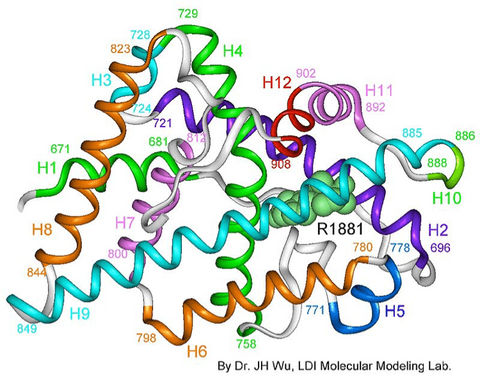
What is Rett Syndrome and can it be treated?
October is Rett Syndrome Awareness Month. What is this rare condition, and what makes it so difficult for children who have it?
What is Rett Syndrome?
Rett Syndrome is a very rare neuro-developmental condition that almost always affects girls (boys do not generally survive). It is a complex series of symptoms, which includes seizures, limited growth, inability to speak, low cognitive functioning and small head, hands and feet. Other symptoms include hand wringing and putting hands in the mouth.
It should be noted that one of the difficulties is that children with Rett Syndrome tend to be aware of what is going on around them, but are unable to express themselves or enjoy full mobility. This makes the condition particularly difficult for children, and also difficult for parents to care for them.

- Affects around 1 in 12000 children
- Small hands, feet and head
- Around the age of 2 development slows down
- Seizures and epilepsy are common
- Inability to eat, loss of useful function of hands, speech, and mobility
- Irregular breathing which places strain on the heart
- Scoliosis is common due to impaired bone growth
- 50% of children with the disorder cannot walk
What causes Rett syndrome?
It is caused by a mutation of the X chromosome. Chromosomes dictate how we grow, develop and adapt to the world around us. Any changes can have negative and life threatening consequences. In 1999, researchers identified one of the genes in the X chromosome responsible for the symptoms suffered by people with Rett Syndrome.
Girls have two X chromosomes, limiting the damage (though it is still severe), whilst boys have just one. This means boys with this mutation usually are miscarried or face a much more severe clinical situation once born.
Can it be treated?
In short, yes. Due to the rareness of the condition, very little research has been carried out and as such treatments are limited. The gene that becomes mutated which causes the disorder was only discovered in 1999, but the field of research has exploded with significant advances in knowledge, treatment and potential cures.
Recent studies have shown that in some cases, symptoms can be halted and the effects even reversed. That said, the disorder is due to genetic mutation, which cannot be treated. All treatments are designed to ease individual symptoms.

Treatments
Physiotherapy:
This can help the scoliosis usually experienced by Rett Syndrome sufferers. Strengthening muscles, improving posture and encouraging mobility can mitigate the problems associated with abnormal bone structure.
Beta blockers:
These can help control irregular heart rhythms which arise from irregular breathing.
Communication aids
Picture boards, visual aids and other communication equipment can be used to help overcome the inability to communicate verbally.
Ankle/foot orthosis
These are braces for the lower legs to help children with Rett Syndrome walk independently.
Medication
Medication is often prescribed to control seizures.
Occupational therapy
This trains children and parents to cope with everyday tasks like getting dressed, eating, going to the toilet etc.
Resources
Diagnosis and treatment is available, with your first port of call being your GP who will refer your child to a specialist. As treatment for Rett Disorder is symptomatic, each symptom will be treated individually by a relevant specialist. Some resources, research foundations and charities dealing with Rett are listed below.
Rett UK (Funding for families)
Rett Syndrome Scotland (Funding for families in Scotland)
Reverse Rett (Research Foundation)
Rett Syndrome (Online resource hub)
Reverse Rett (Research Foundation)

